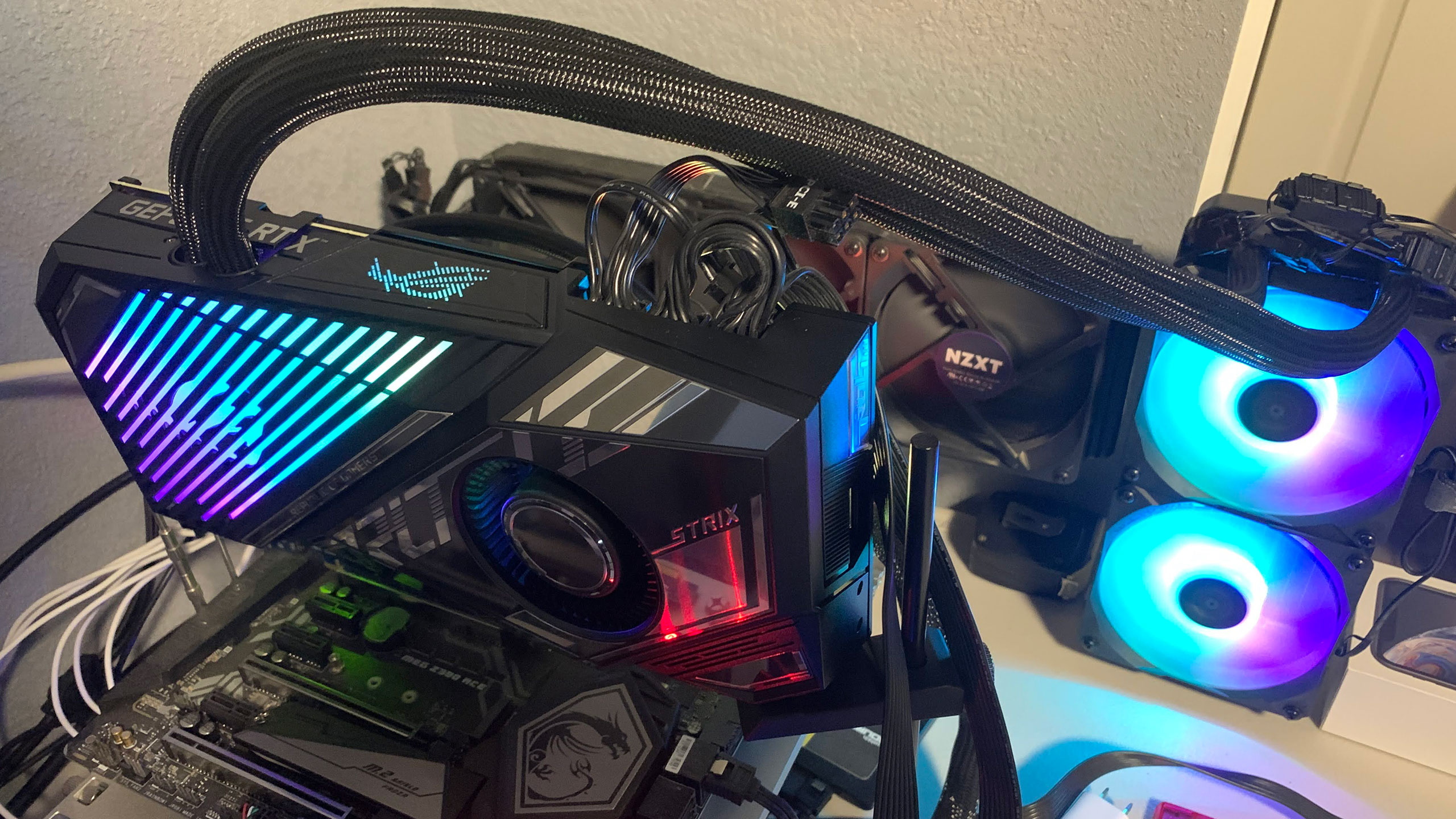Why you can trust Tom's Hardware
Performance isn't the only important metric when it comes to graphics cards. We also test power consumption using in-line monitoring tools and Powenetics software. We log power, clock speeds, temperatures, and fan speeds (note that the fan speed data wasn't properly collected for the Zotac card — we're working to fix that). We loop the Metro Exodus benchmark five times at 1440p ultra settings, and then run FurMark stress test at 1600x900 for over 10 minutes.
For the Asus card, we're also collecting these power metrics in both the default Gaming mode as well as using the OC mode. Again, all of our benchmarks were done with OC mode enabled, for maximum performance. Here we'll get to see how much that affects power consumption, temperatures, and other aspects of the card. Note that in limited testing, the OC mode improved performance just 1–2%.
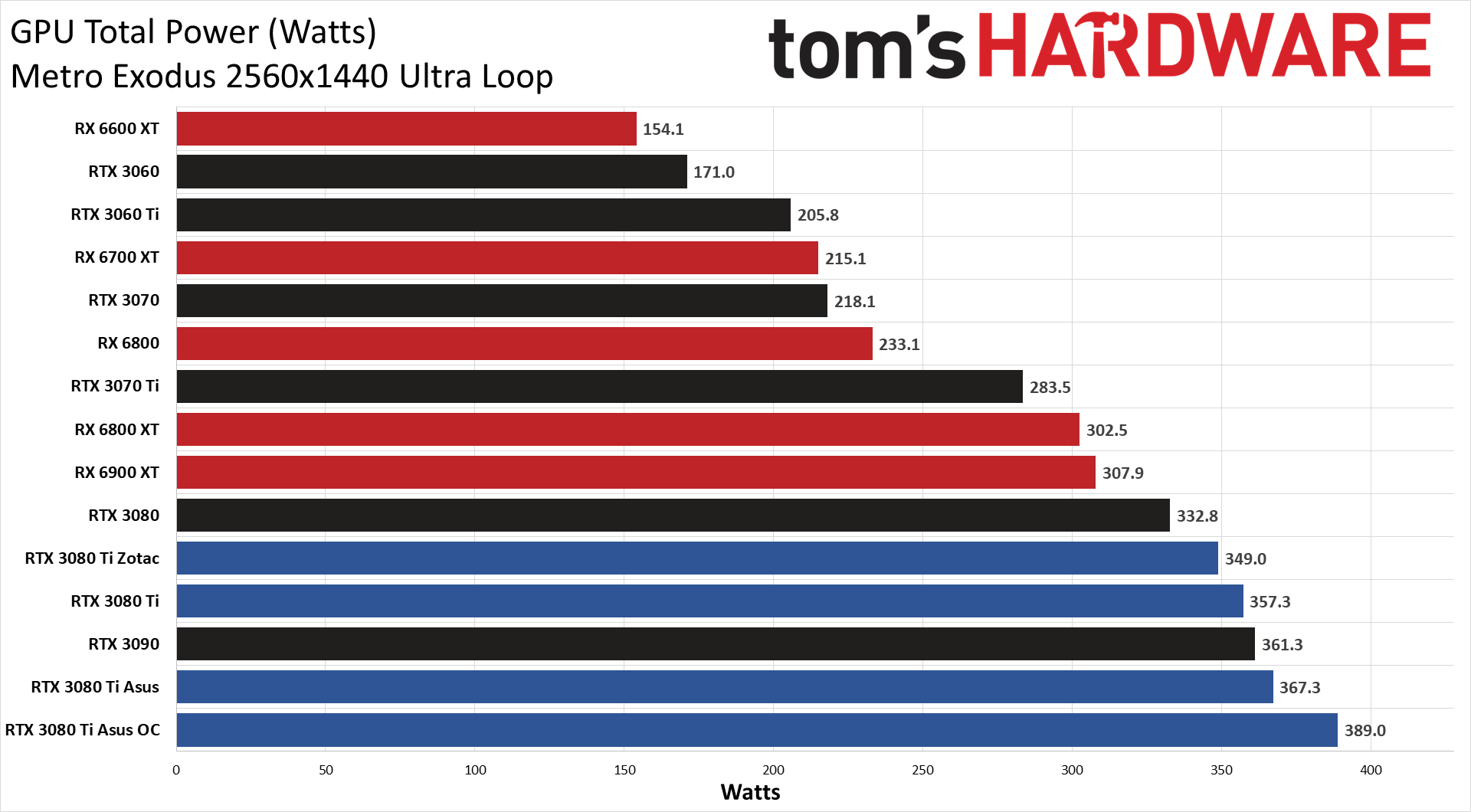
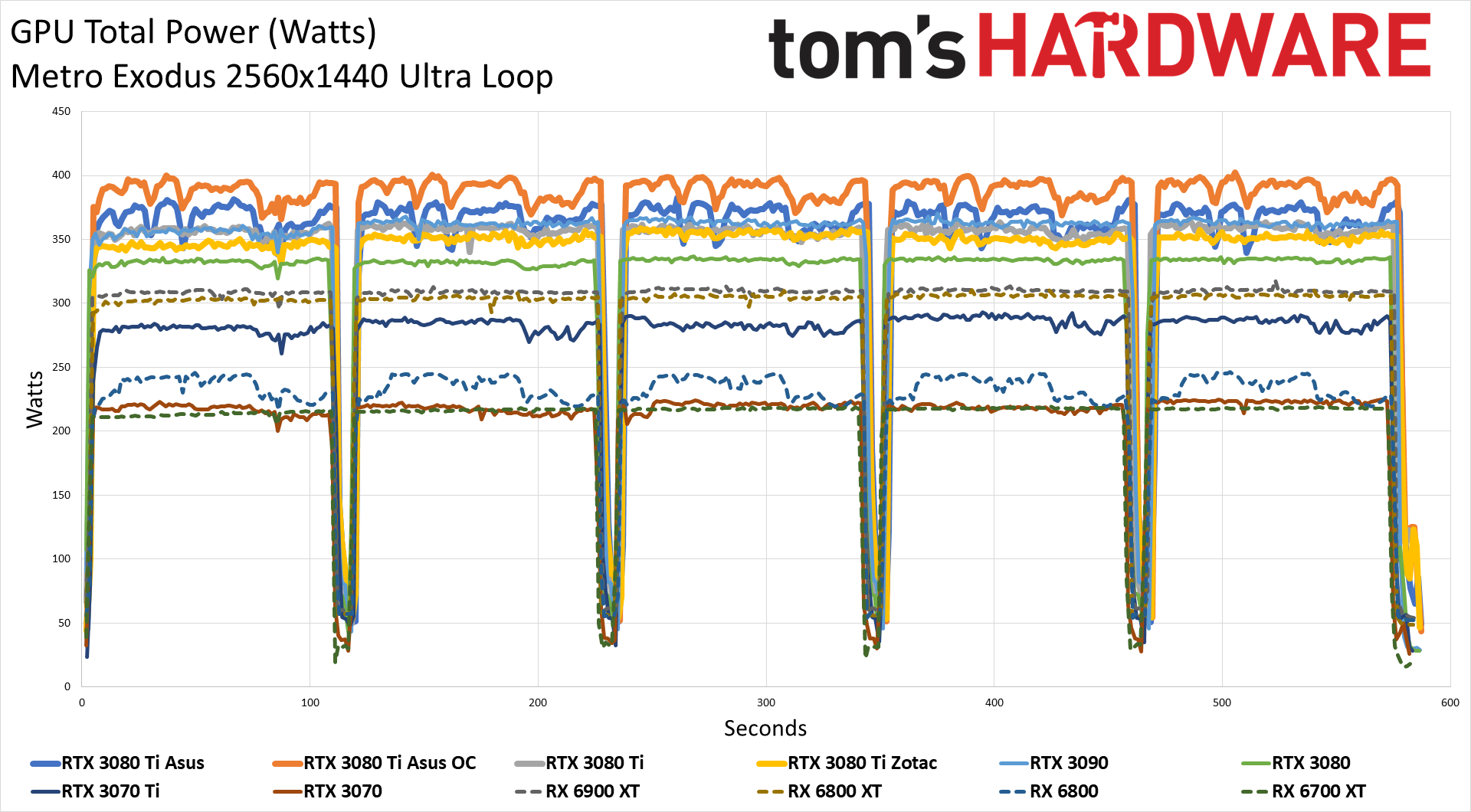
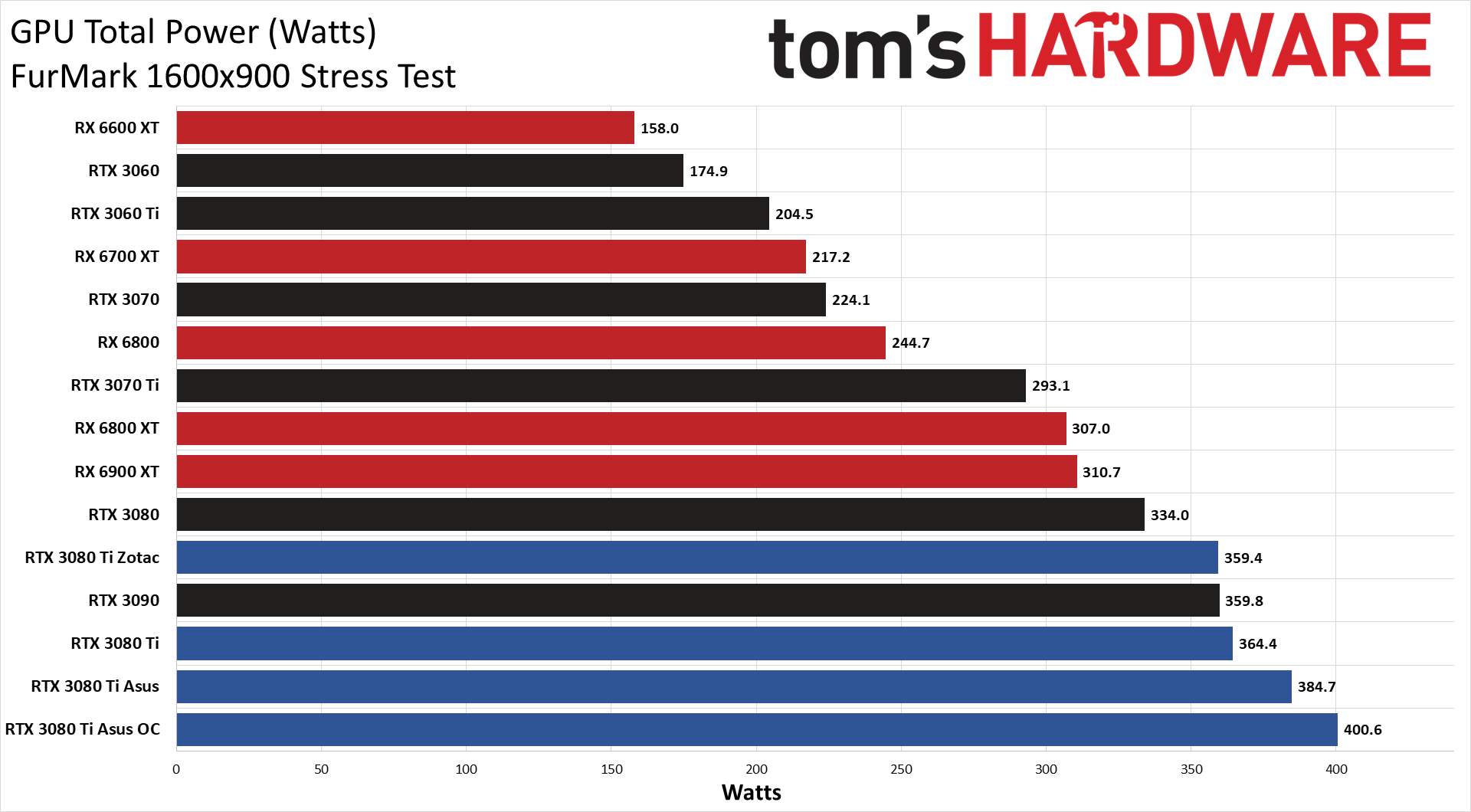
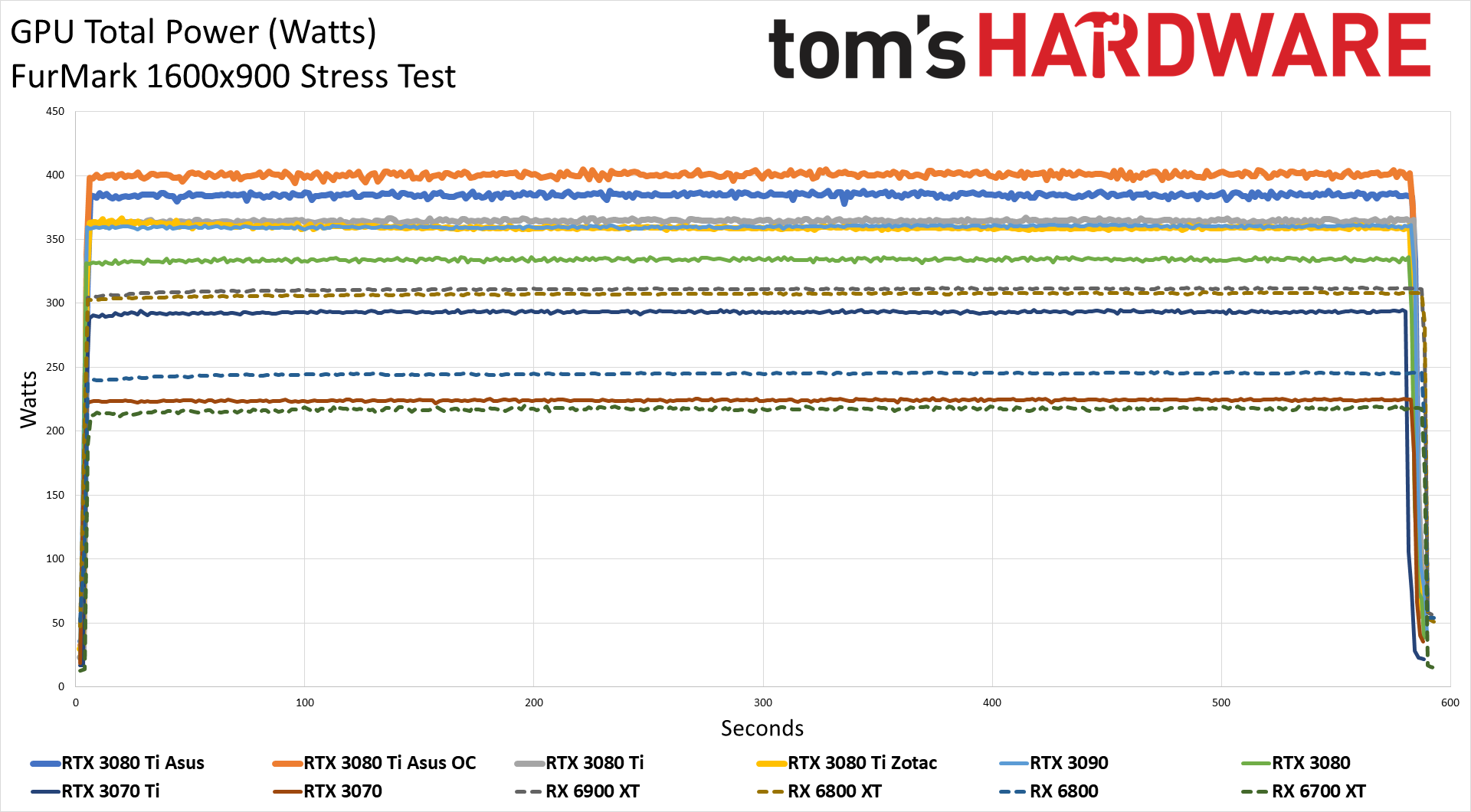
Power consumption for the Asus 3080 Ti was about 10W higher than the Founders Edition in Metro Exodus and 20W higher in FurMark. The Zotac card actually used less power than the Founders Edition, but it also didn't perform any better. Enabling OC mode adds another 15–20W of power, still far lower than the theoretical limit you'd expect from a 10% increase. The other charts will help explain the power difference, as all of these factors are interrelated.
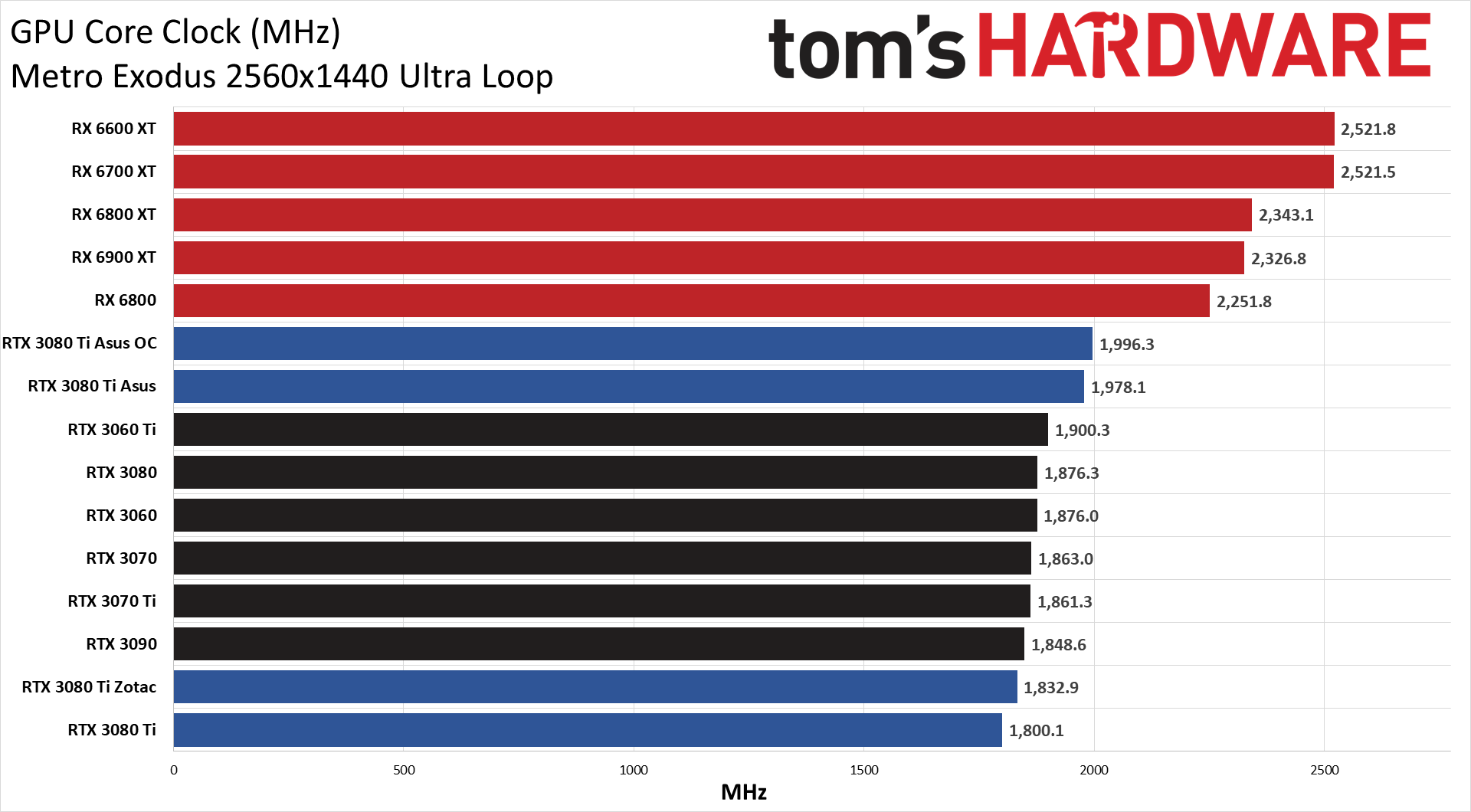
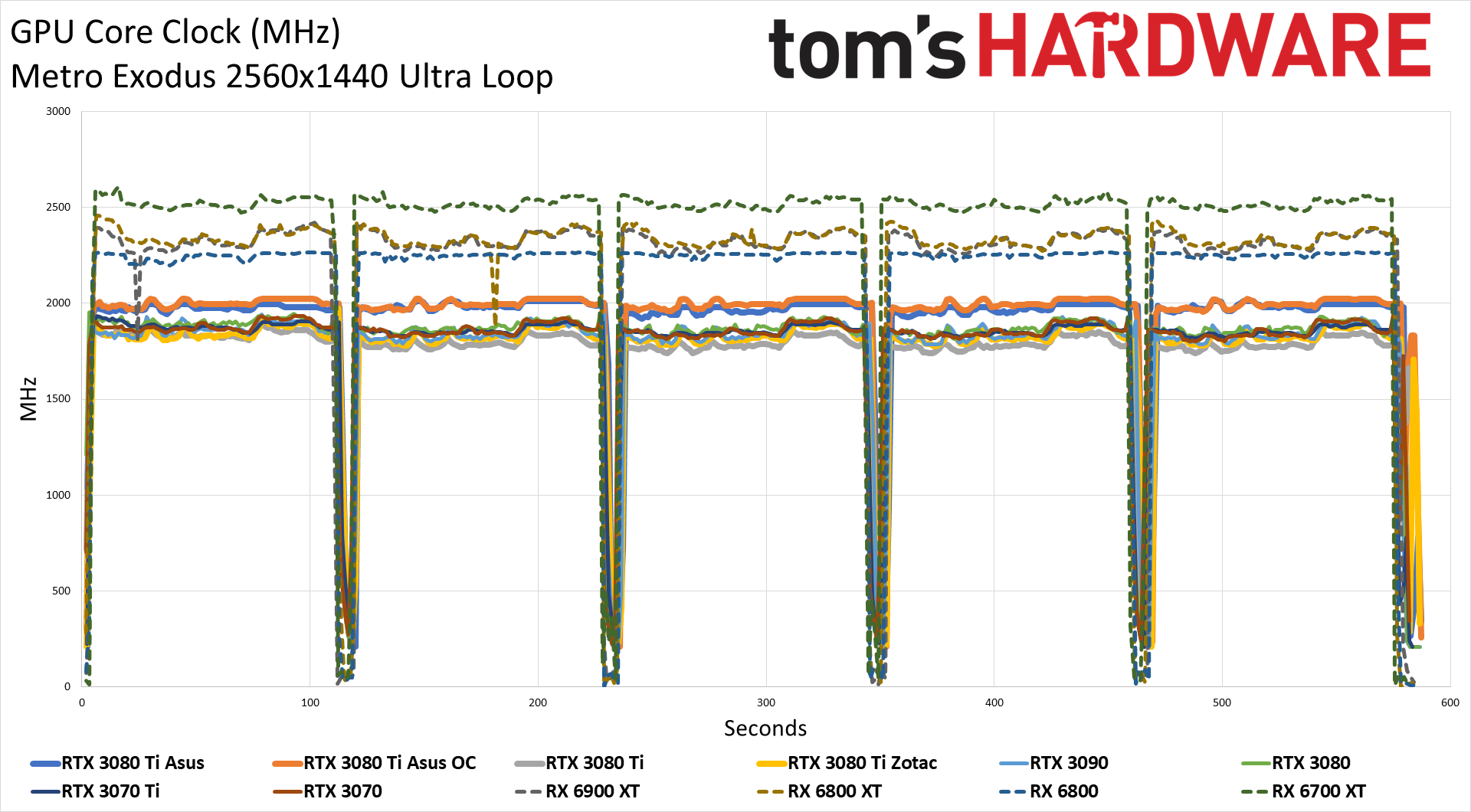
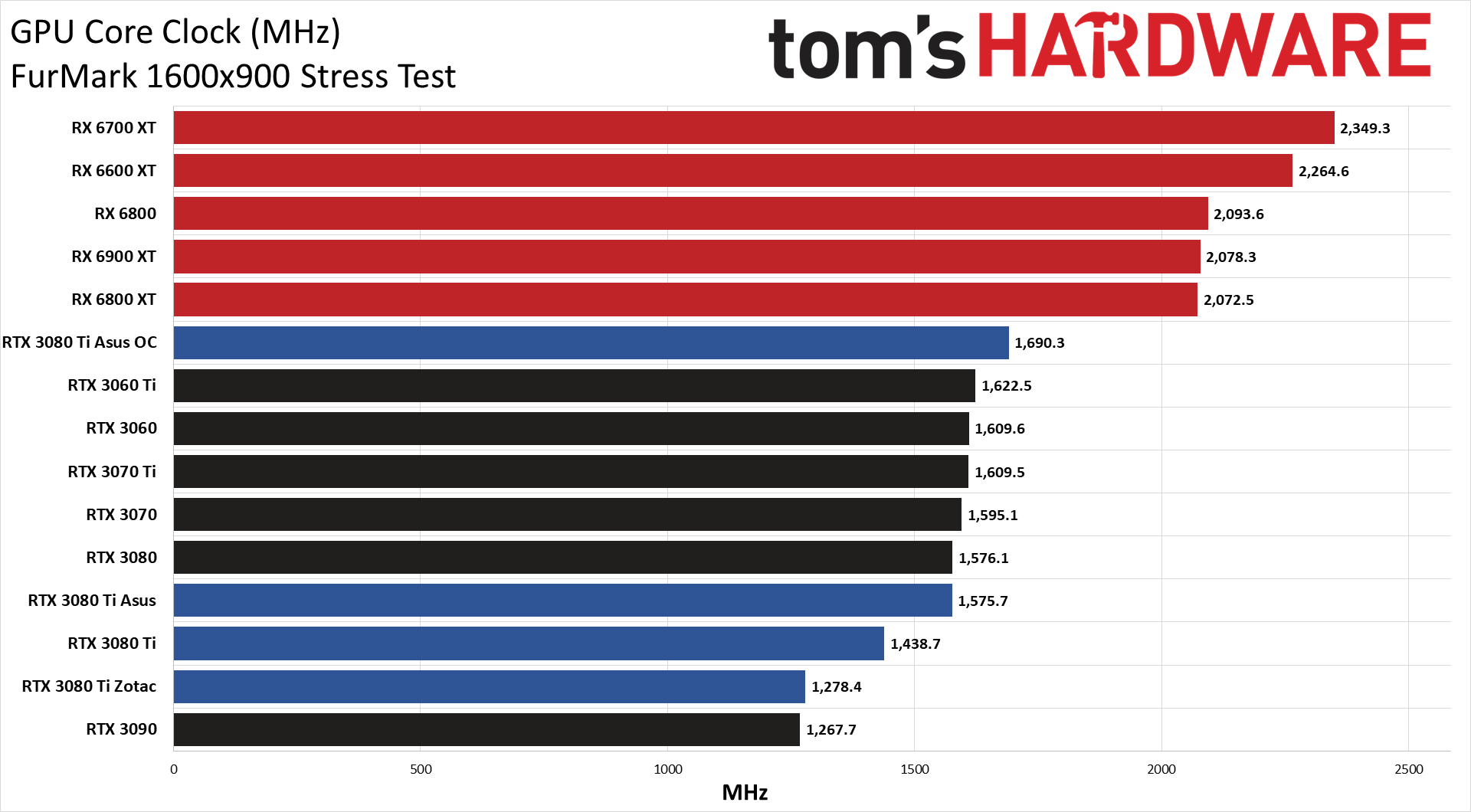
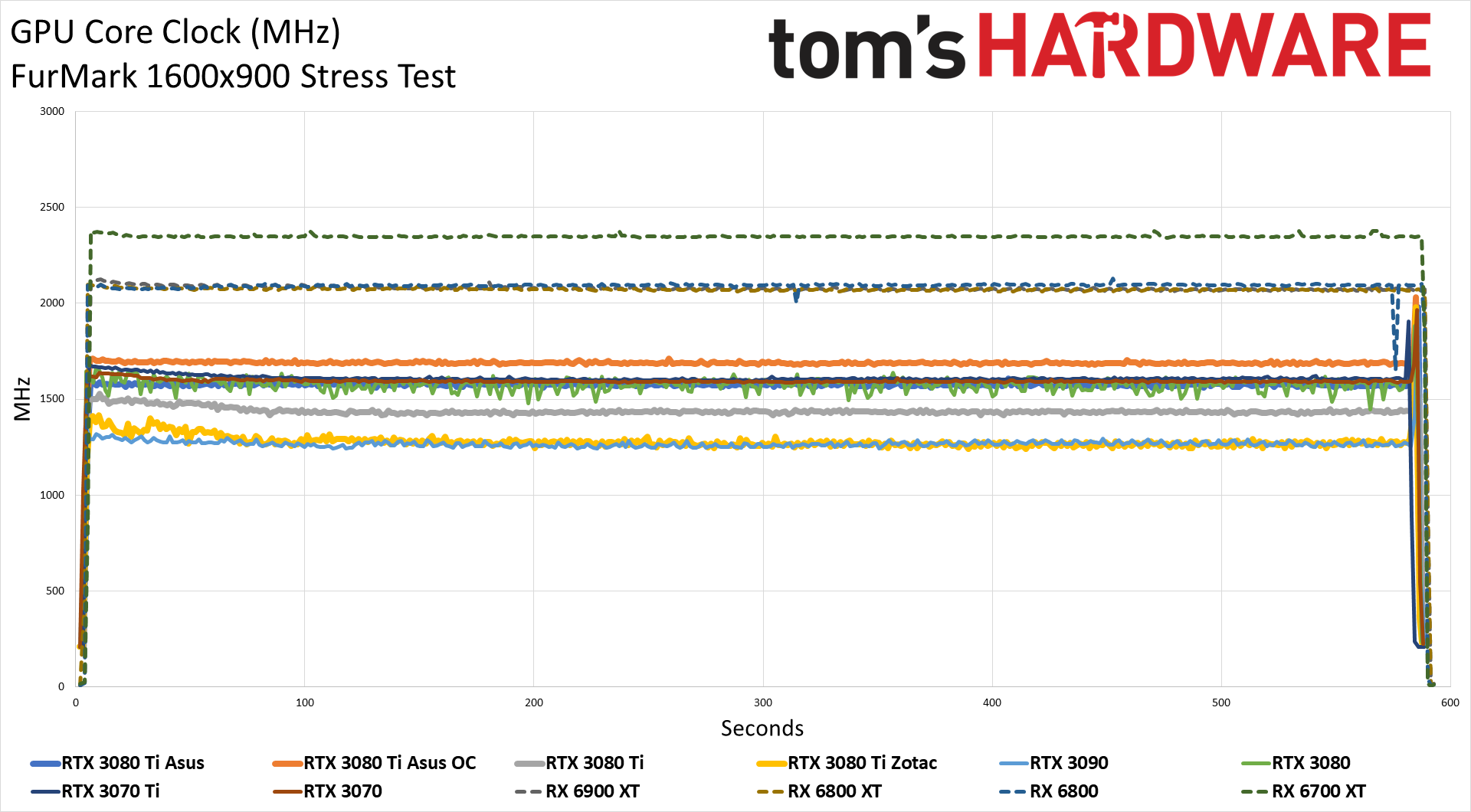
The Asus card managed to deliver the highest GPU clocks we've seen from an Nvidia card to date, which isn't surprising considering the added cooling. It averaged nearly 2GHz in Metro Exodus, beating the Founders Edition by over 175MHz and the Zotac card by 145MHz. It's still a far cry from the 2.3–2.5GHz we're seeing on AMD's RX 6000 GPUs, but those are very different architectures. The gap in FurMark is even larger, where the Asus card averaged 1575MHz compared to just 1278MHz on the Zotac card, and that 300MHz advantage more than explains the 25W power gap. As for the overclocking mode, it helped a lot more in FurMark, adding 115MHz to the average clocks, but in Metro it only increased the GPU clock by about 20MHz.
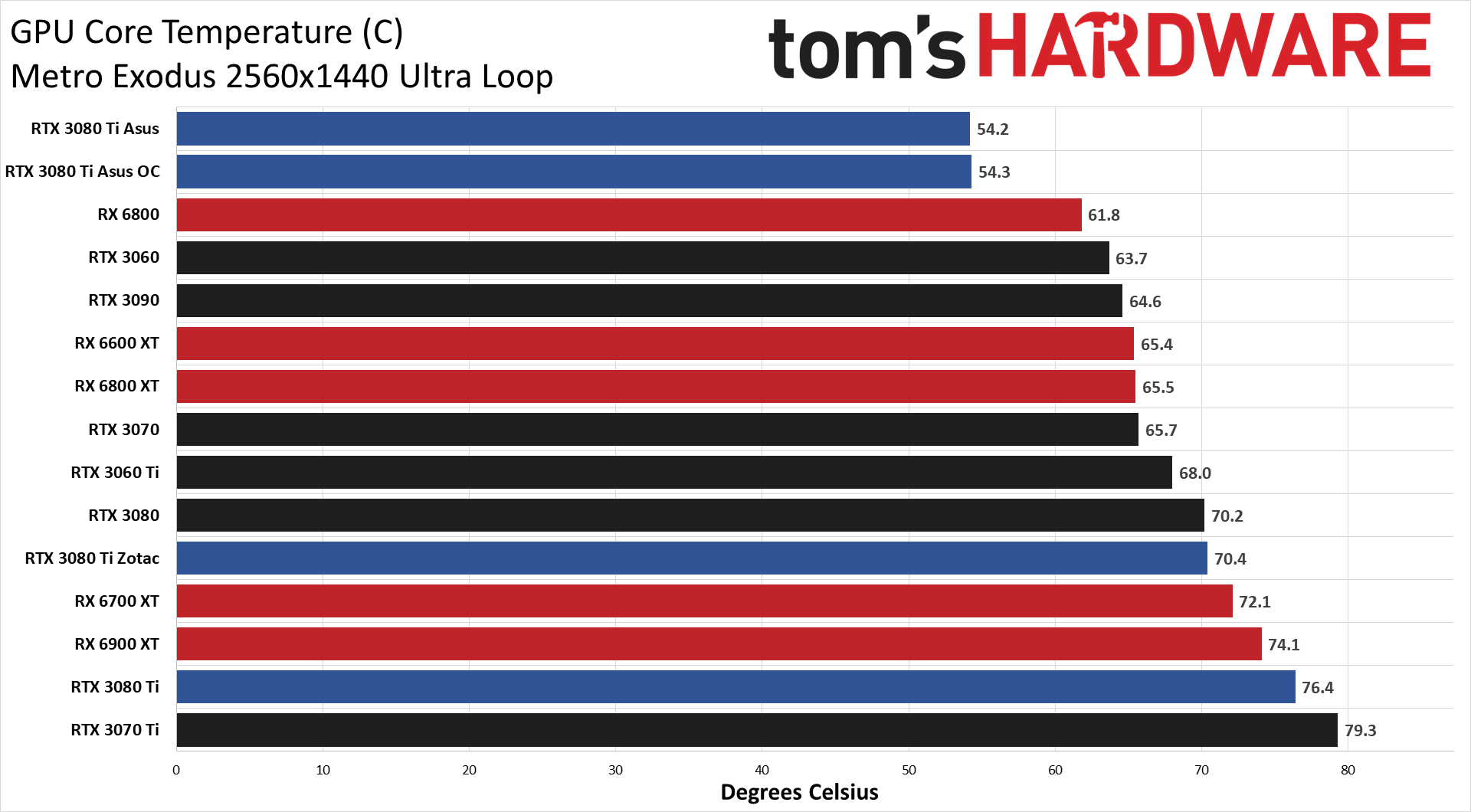
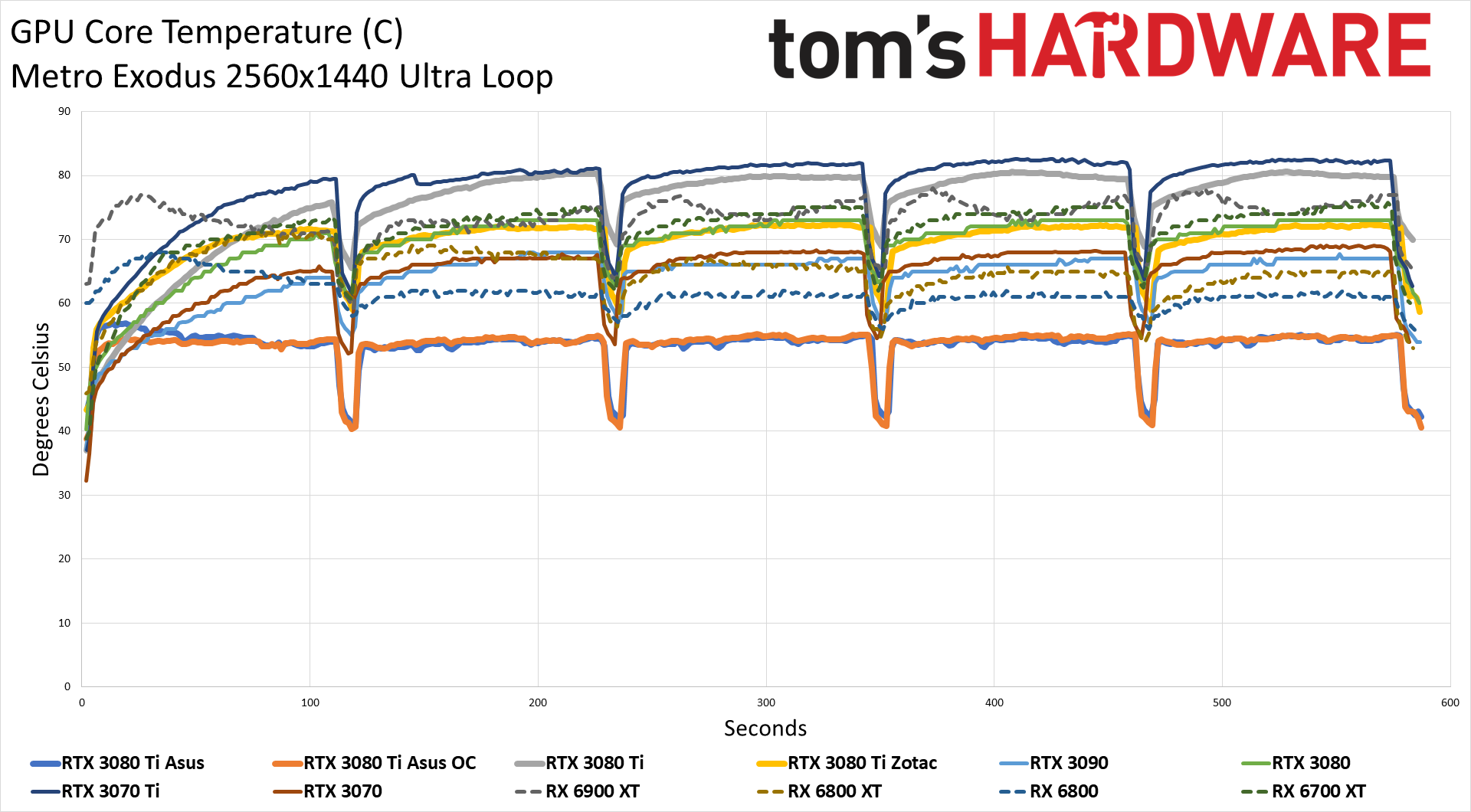
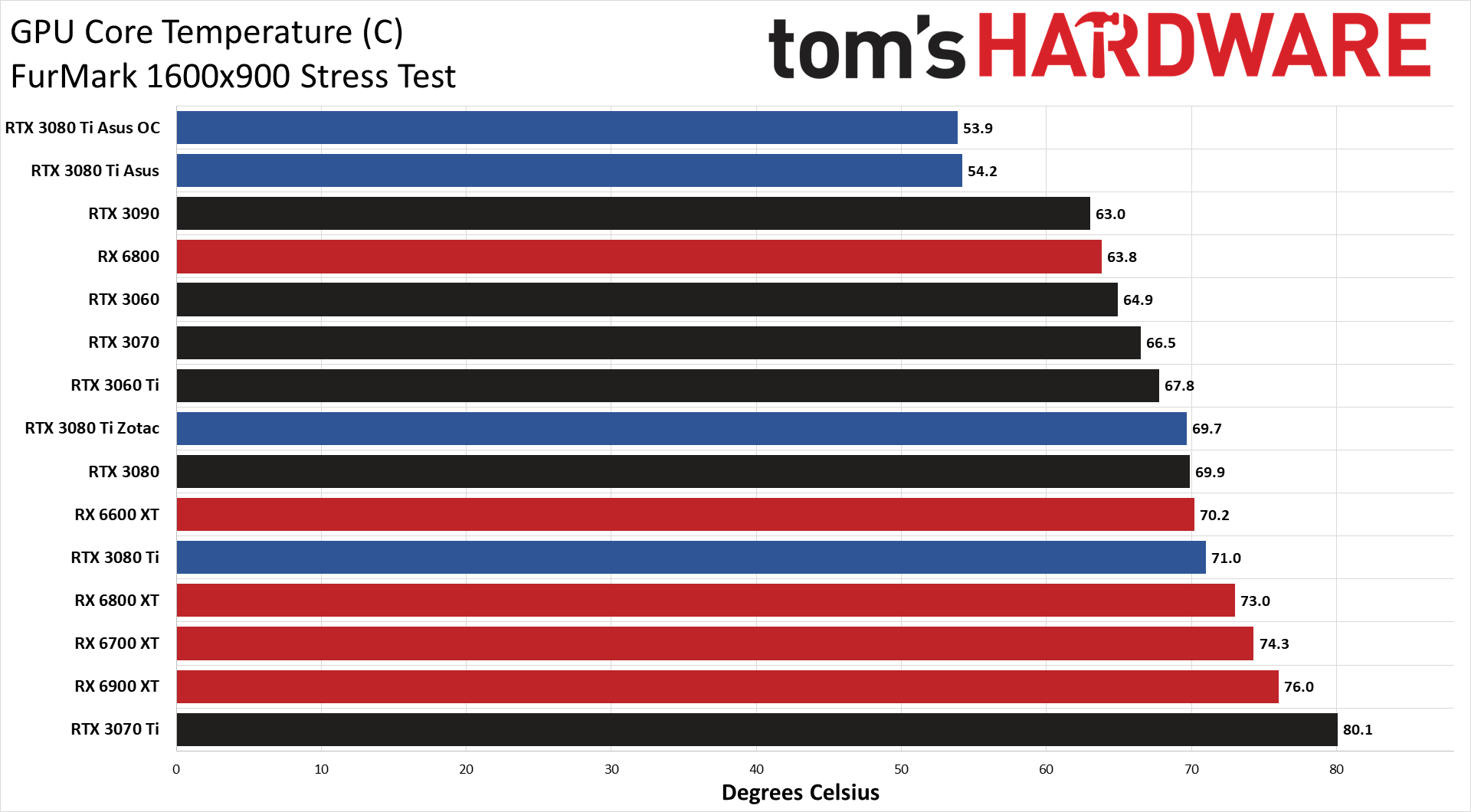

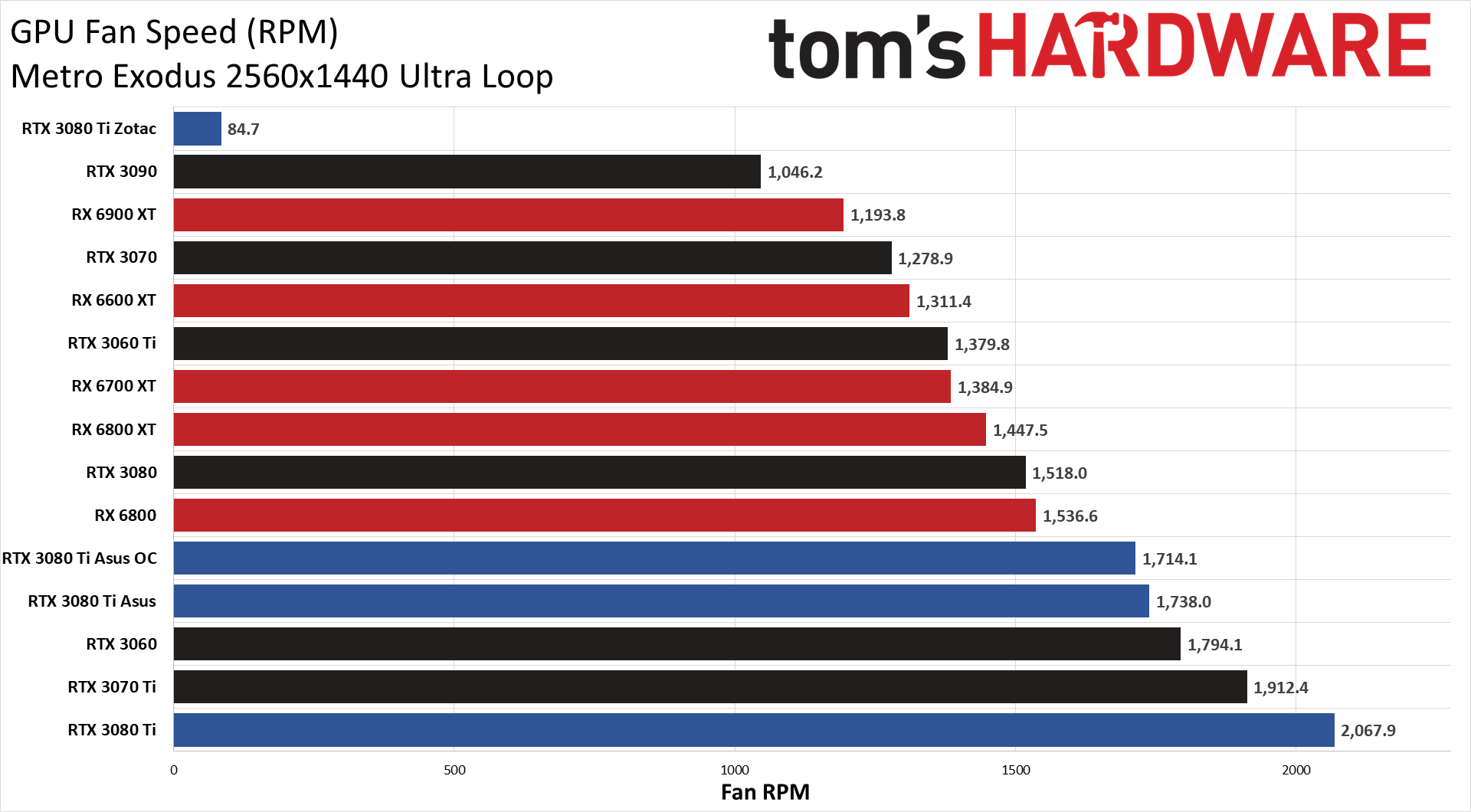
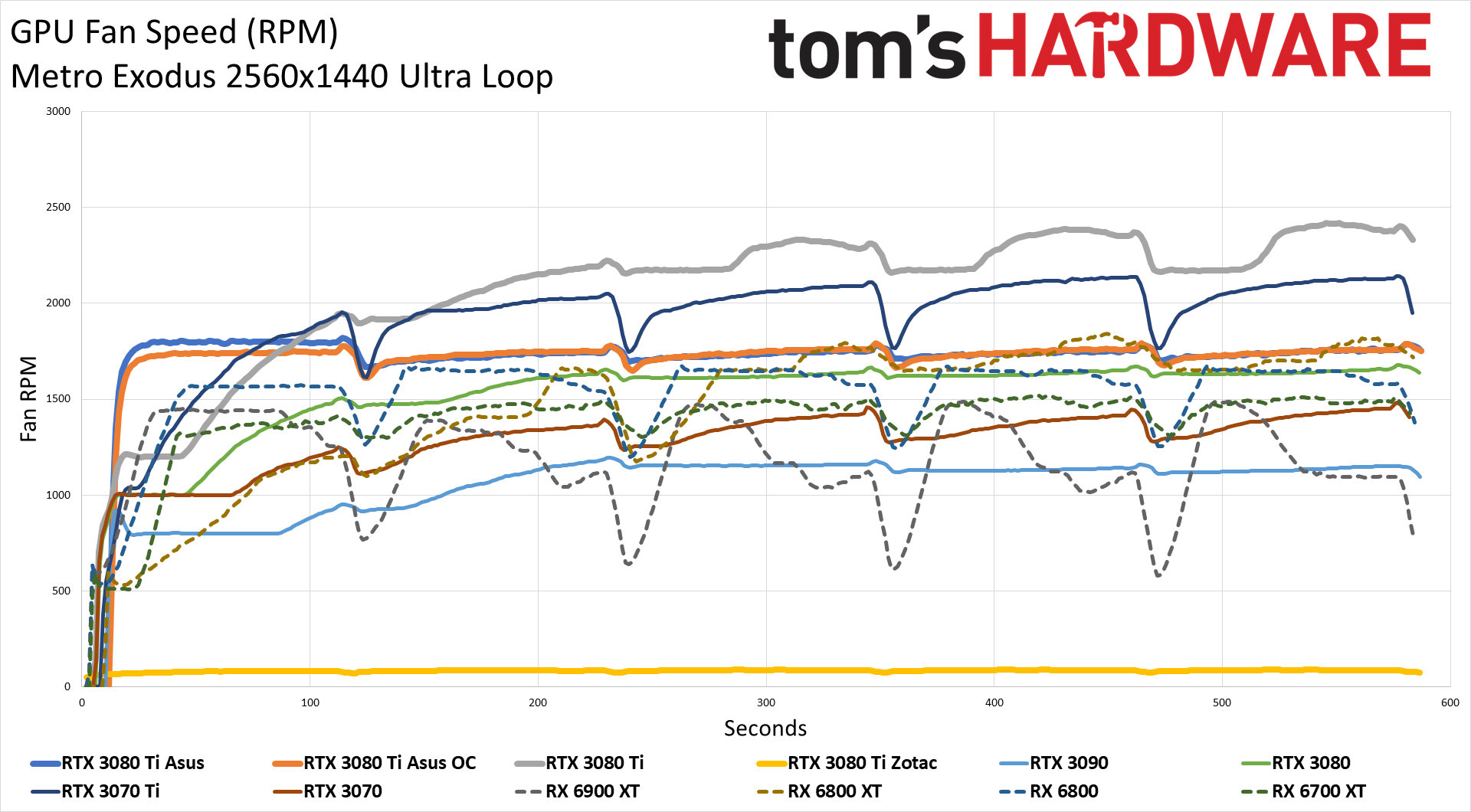
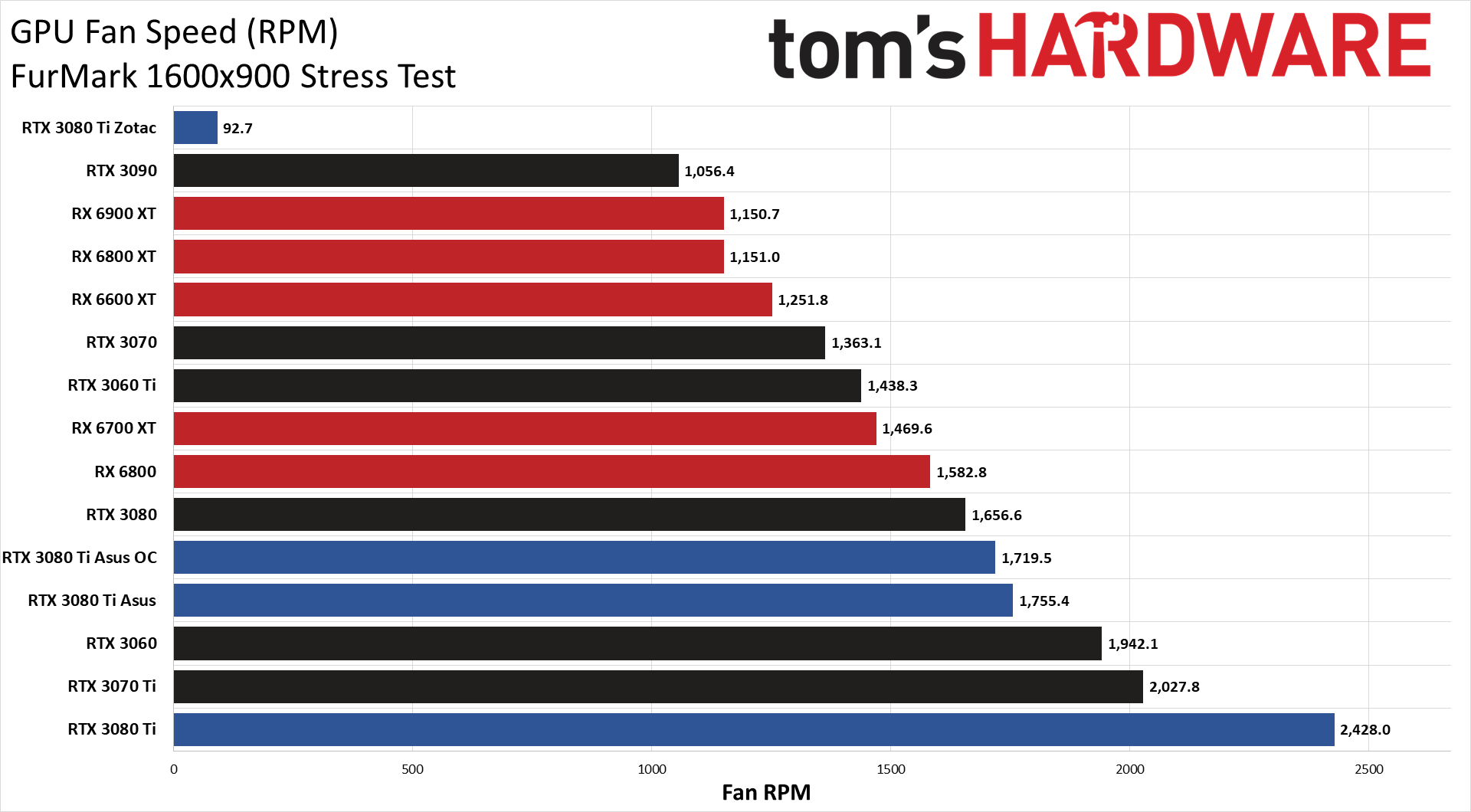
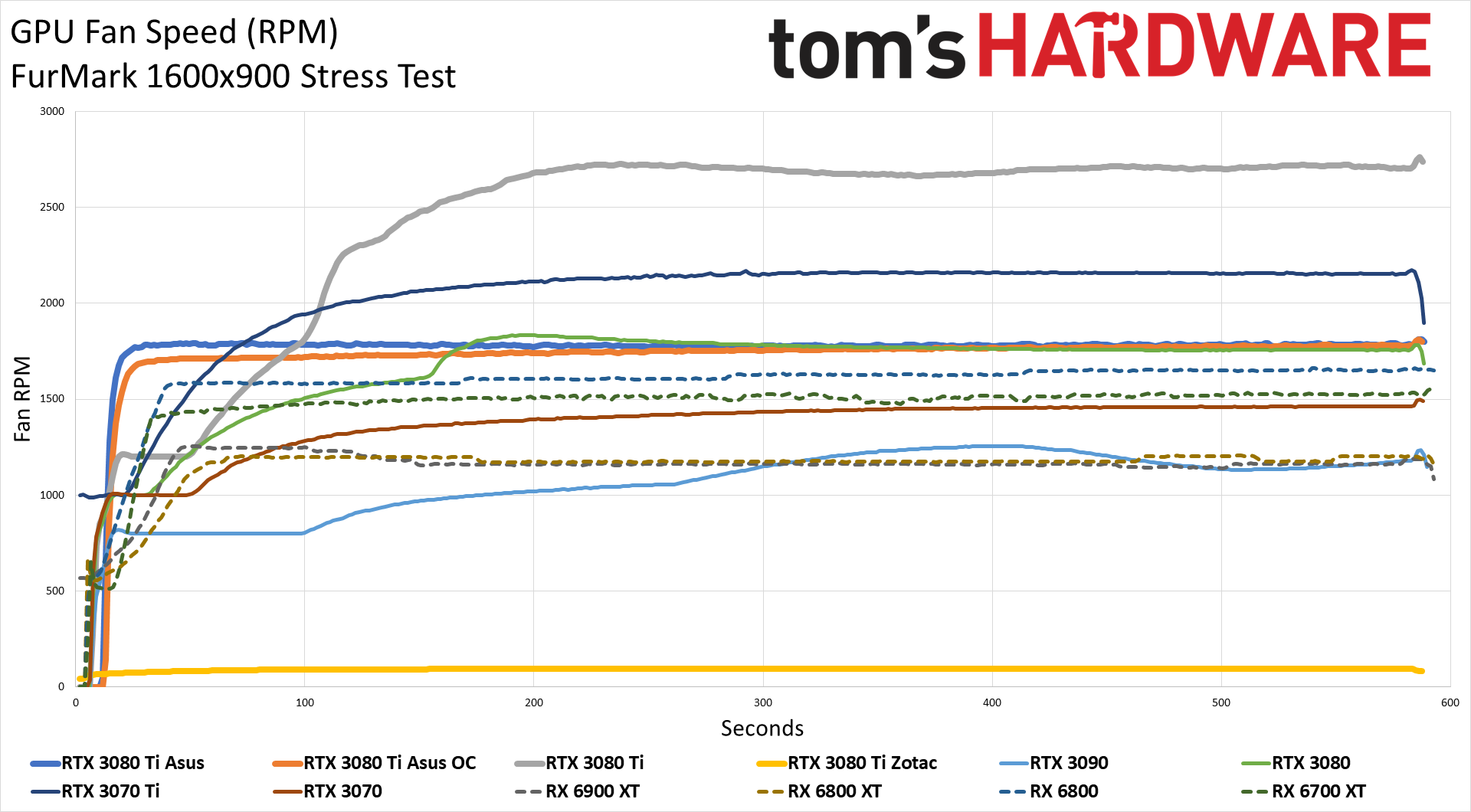
Fan speeds and temperatures are the final part of the power and performance story. Asus seems to play it pretty conservatively, with fan speeds quickly ramping up to a steady 1750 RPM, give or take. The flip-side of that is that the GPU temperatures on the Asus card during the Metro and FurMark tests pretty much flatlined at 54C max, over 15C cooler than the Zotac card and 20C lower than the Founders Edition. There's definitely plenty of cooling headroom left in the tank — and enabling the OC mode doesn't really change things.
We also measure peak noise levels using an SPL meter at a distance of 15cm from the GPU fans. We had to shift the radiator around a bit so that both it and the single blower fan on the card were equidistant from the SPL meter, and the result was a noise level of 51.8 dB(A). Interestingly, that corresponded to a rather high fan speed of 80%, so setting a static 75% fan speed dropped the noise level to 48.8 dB(A). The Zotac card was a bit quieter, but also ran at higher temperatures, while the Founders Edition was slightly louder (52.0 dB(A)) but ran significantly hotter.
MORE: Best Graphics Cards
Get Tom's Hardware's best news and in-depth reviews, straight to your inbox.
MORE: GPU Benchmarks and Hierarchy
MORE: All Graphics Content
Current page: Power, Clocks, Temperatures, Fan Speed, and Noise on the Asus ROG Strix LC GeForce RTX 3080 Ti
Prev Page Gaming Performance on the Asus ROG Strix LC GeForce RTX 3080 Ti Next Page Asus ROG Strix LC GeForce RTX 3080 Ti: Excellent Performance, Exorbitant Price
Jarred Walton is a senior editor at Tom's Hardware focusing on everything GPU. He has been working as a tech journalist since 2004, writing for AnandTech, Maximum PC, and PC Gamer. From the first S3 Virge '3D decelerators' to today's GPUs, Jarred keeps up with all the latest graphics trends and is the one to ask about game performance.
